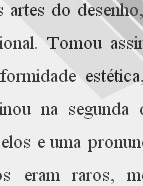

................................
Their main feature was that they gave art a more prominent place and frequently sought to promote and guide it. In fact, literary preponderance continued to be recurrent in periodicals whose title would seem to suggest otherwise: A Arte [Art] (Porto, 1895), A Arte [Art] (Coimbra, 1895-96), A Arte (Porto, 1897-98) and Arte Livre [Free Art] (Braga, 1897-98). Despite the obvious difficulties in terms of the autonomization of the press dedicated to art, four journals are particularly noteworthy: Artes e Letras [Arts and Letters], directed by Rangel de Lima (Lisbon, 1872-1875), A Arte, directed by Sousa e Vasconcelos (Lisbon, 1879-1881), A Arte Portuguesa [Portuguese Art], under Joaquim de Vasconcelos (Porto, 1882-1884) and Arte Portuguesa, under the literary direction of Gabriel Pereira and art direction of aquarellist Casanova (Lisbon, 1895).
In these journals, historiography and criticism appeared side by side, reflecting the practice of many scholars. The frequently fabulous search for strict objectivity was based on an intrinsic unanimity of aesthetic enhancement criteria, which was extended to both historians and critics, giving them epistemological security and making them believe in criticism as a science. They all shared three interdependent convictions: art is the expression of absolute beauty, art expresses the artist's subjectivity, art should not contradict nature. The balanced exercise of these dogmas prevented the potential excesses contained in each of them and provided an impregnable basis for appraisal. It followed, therefore, that criticism was structured around three aspirations which, as stated elsewhere, were no more than the consequences of aesthetic dogmatism: scientific grounds, impartiality, and critical character. Obviously, these features embody a theory of art marked both by the predominance of idealism that tends to reject the subjectivity of taste and by the acceptance of positive, descriptive, and erudite knowledge. Until the beginning of the 20th century, art criticism was a judgement and therefore wished to be a science. It became impression and therefore wished to be art.
Criticism underwent remarkable development in the last three decades of the 19th century, initially thanks to authors such as Rangel de Lima, Luciano Cordeiro, António Enes and Zacarias d'Aça. Francisco Rangel de Lima (Lisbon, 1839 - Lisbon, 1909), a civil servant and playwright, authored many articles in Artes e Letras and A Arte, in the 1870s. Luciano Cordeiro (Mirandela, 1844 - Lisbon, 1900) a graduate from the Curso Superior de Letras, was a teacher, director-general of Public Instruction, a member of parliament for the Partido Regenerador [Regenerator Party], and founder of the Sociedade de Geografia de Lisboa [Lisbon Geographical Society].
